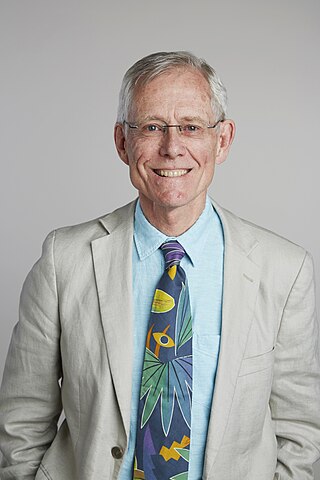
Sir John Edward Sulston was a British biologist and academic who won the Nobel Prize in Physiology or Medicine for his work on the cell lineage and genome of the worm Caenorhabditis elegans in 2002 with his colleagues Sydney Brenner and Robert Horvitz at the MRC Laboratory of Molecular Biology. He was a leader in human genome research and Chair of the Institute for Science, Ethics and Innovation at the University of Manchester. Sulston was in favour of science in the public interest, such as free public access of scientific information and against the patenting of genes and the privatisation of genetic technologies.

The landed gentry, or the gentry, is a largely historical British social class of landowners who could live entirely from rental income, or at least had a country estate. While distinct from, and socially below, the British peerage, their economic base in land was often similar, and some of the landed gentry were wealthier than some peers. Many gentry were close relatives of peers, and it was not uncommon for gentry to marry into peerage. It is the British element of the wider European class of gentry. With or without noble title, owning rural land estates often brought with it the legal rights of lord of the manor, and the less formal name or title of squire, in Scotland laird.

Sir John Bertrand Gurdon is a British developmental biologist, best known for his pioneering research in nuclear transplantation and cloning.

Sir Paul Patrick Gordon Bateson, was an English biologist with interests in ethology and phenotypic plasticity. Bateson was a professor at the University of Cambridge and served as president of the Zoological Society of London from 2004 to 2014.

Sir Martin John Evans is an English biologist who, with Matthew Kaufman, was the first to culture mice embryonic stem cells and cultivate them in a laboratory in 1981. He is also known, along with Mario Capecchi and Oliver Smithies, for his work in the development of the knockout mouse and the related technology of gene targeting, a method of using embryonic stem cells to create specific gene modifications in mice. In 2007, the three shared the Nobel Prize in Physiology or Medicine in recognition of their discovery and contribution to the efforts to develop new treatments for illnesses in humans.

Dame Anne Laura Dorinthea McLaren, was a British scientist who was a leading figure in developmental biology. Her work helped lead to human in vitro fertilisation (IVF), and she received many honours for her contributions to science, including election as fellow of the Royal Society.
Patricia "Pat" Simpson FRS is a distinguished British developmental biologist. Simpson was a professor of Comparative Biology at the University of Cambridge from 2003 to 2010, and was the University's Director of Research for the academic year 2010/2011. She is currently an Emeritus Professor of the Department of Zoology of the University of Cambridge, having previously been Professor of Comparative Embryology, and a Fellow of Newnham College. She was elected a Fellow of the Royal Society in 2000.

The University Museum of Zoology is a museum of the University of Cambridge and part of the research community of the Department of Zoology. The public is welcome and admission is free (2018). The Museum of Zoology is in the David Attenborough Building, formerly known as the Arup Building, on the New Museums Site, just north of Downing Street in central Cambridge, England. The building also provides a home for the Cambridge Conservation Initiative, a biodiversity project.
Herbert Newell Bate was Dean of York between 1932 and 1941.
Roger Soame Jenyns, who usually wrote his name simply as Soame Jenyns was a British art historian, known as an expert on East Asian ceramics.
Michael Edwin Akam FRS is a British zoologist. He is professorial fellow of Darwin College, Cambridge, and he is a director, University Museum of Zoology.

Dingestow Court, at Dingestow, Monmouthshire, Wales, is a Victorian country house with earlier origins and later additions. The architectural historian John Newman describes it as "one of the county's major houses" and Cadw notes its "entertaining confection of styles". The court is a Grade II* listed building.
George Leonard Jenyns was an English priest, a landowner involved both in the Bedford Level Corporation and in the Board of Agriculture.

Sir James Cuthbert Smith is Director of Science at the Wellcome Trust, Senior Group Leader at the Francis Crick Institute and President of the Council at Zoological Society of London.

Dr Egerton Leigh, was an 18th-century Anglican clergyman and landowner in North West England.

Alan Madoc Roberts FRS is an English academic serving as Emeritus professor of Zoology in the School of Biological Sciences at the University of Bristol.
Beverley Jane Glover is a British biologist specialising in botany. Since July 2013, she has been Professor of Plant Systematics and Evolution in the Department of Plant Sciences at the University of Cambridge and director of the Cambridge University Botanic Garden.
The Very Revd John Frankland was an 18th-century academic and Dean in the Church of England.
The Bund family of Wick Episcopi owned estates in Worcestershire since the fifteenth century; from this armigerous landed gentry family came several individuals of note in the fields of law, local government and literature.
Kate Gillian Storey is a developmental biologist and head of Division of Cell & Developmental Biology at University of Dundee.










